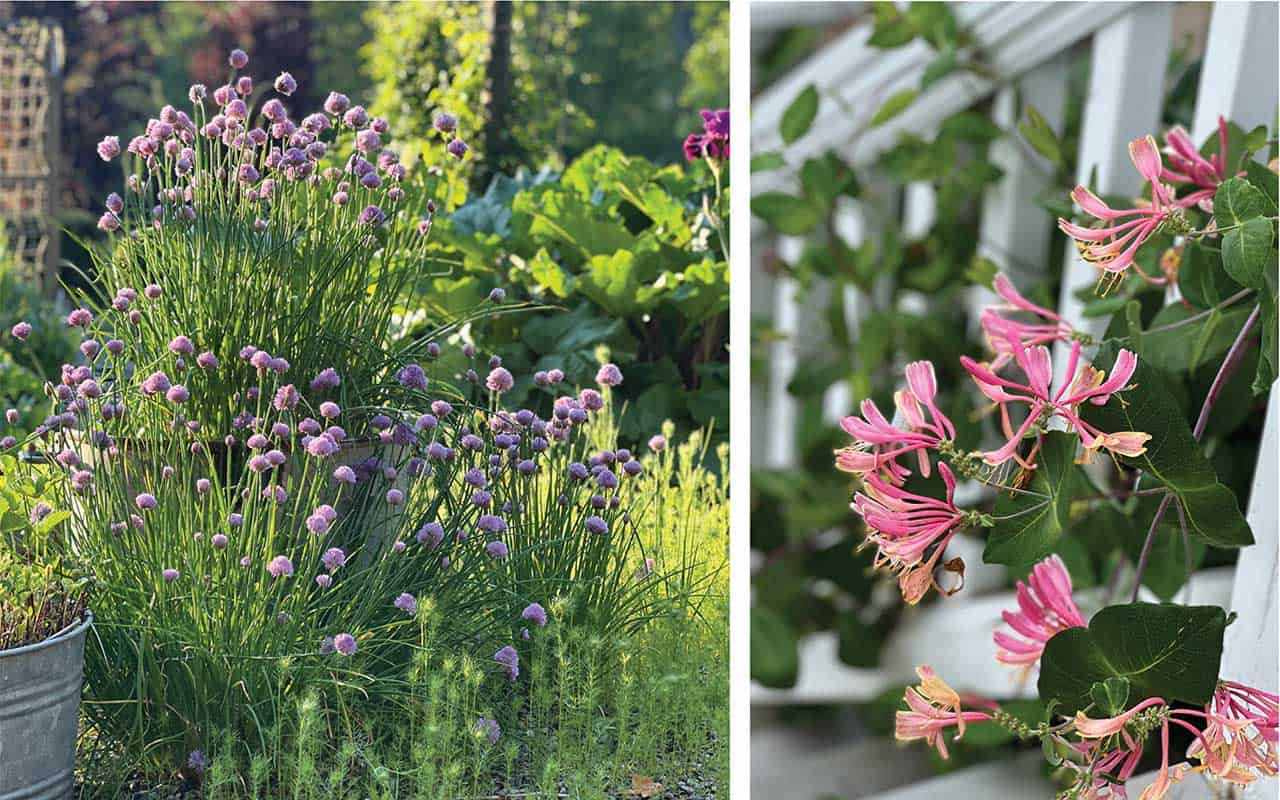I hate starting an article as a killjoy – especially when it comes to anything floral – but for this food and drink edition of Main Street Magazine before I get on to the waxing lyrical bit of how to incorporate flowers into your dining beyond those gracing the table top, a few words of warning.
Probably best to start with the fact that not every flower is your friend when it comes to food. While many flowers can add subtle flavor and beauty to food – lavender, rose, violet, lilac, elderflower and magnolia – there are others – sweet peas, foxgloves and monkshood – whose presence on the plate can lead to consequences from mild digestive disturbance to death! So, before you get excited and jump into hunter-gatherer mode, exercise some caution and please double-double-check with Dr. Google before you start picking.
Hold up. Have a think.
When you think of flowers and food, what is first image that pops into your mind? Maybe a romantic or picture-perfect summer dessert, celebratory cupcakes, or even your wedding cake topped and decorated with delicate flower petals? A final flourish depicting love, nature, and beauty? Well, hold up there Romeo, and have a think where those flowers might have come from. Your organic garden or the supermarket? In which case – and especially if they consist of something completely unseasonal say, red roses in the Northern Hemisphere on February 14 – they’ve most likely been commercially grown and doused in chemicals and preservatives to sustain them through their hellish transfer from South American hothouse via planes, trains, and automobiles before adorning your culinary offering. You probably weren’t looking for a literal reenactment of Shakespeare’s greatest love tragedy with that cupcake were you? So please, just as with the actual menu ingredients themselves, stop and think about the provenance of your decorative flourish and any unwelcome add-ons they might unwittingly be adding to the party.
Edimental-what?
Those fairly crucial caveats aside, I know I’m biased, but I think there are few adornments more magical that will elevate your dishes and baked offerings than flowers. But it’s not just for adornment that we should be looking towards our flower gardens. This year’s Chelsea Flower Show, an annual event held in the heart of London at the end of May of such mind-blowing horticultural magnitude, beauty, and inspiration that it’s the gardener’s equivalent of Mecca – all of us should visit it at least once in our lives – was awash with what are fast becoming referred to as edimentals. These are ornamental plants grown as much for their beauty in the garden as for their use in the kitchen. Like fashion starting on the haute couture catwalks and ending up on the High Street, whatever trend is at Chelsea this year will soon be coming to a garden near you.
Herb it up
Herbs are the obvious place to start. Don’t just grow these for their leaves but for their flowers too. Chives (mine are out of control, but their blossoms, as I write this, are so beautiful scattered atop just about every savory dish and added to flower arrangements that I’ve let them spread with abandon far beyond their pot), rosemary, borage, nigella, dill, and various types of mint (never let these go beyond their pot, and never plant them in a pot or you will rue that day as it takes over your whole garden!) all have the most beautiful flowers, which can be used interchangeably between saucepan and vase.
Lurk and think ahead
Lurk a little longer in the vegetable plot, and there are a couple of friends whose extra benefits can easily get overlooked when it comes to both eating and arranging. The flowers of zucchini plants, scarlet runner beans, and nasturtiums are all delicious – and in the case of the latter, just about the easiest and most joyful plants to grow.
Likewise, on the food-to-flower side, if you are lucky and patient enough to have a productive asparagus bed (it takes three years between planting and your first harvest), once you’ve eaten more spears than you ever thought possible and then some, letting this go to seed will give you what has become my most wonderful source of green vase foliage come fall. And while on the subject of edible fall flower arrangements, you heard it here first: trailing cherry tomatoes are fast becoming the hottest ingredient in table top décor.
The bouncer
Out in the wider garden, beyond the more obvious aforementioned ‘sweet’ flowers, there are some truly heroic garden flowers on the savory side which a) look good b) attract a host of beneficial pollinators, and c) can act as bouncers to other plants by repelling not-so-welcome insect predators via companion planting. These include monarda (or as it’s colloquially known for good reason, bee balm), marigolds, and calendula. The flowers of these can all be used in salad, and as garnishes, both for flavor and for a decorative flourish.
So, how much are we loving the idea of these double-duty Edimentals? I’d encourage any gardener/cook to add them to their horticultural repertoire but especially for those with limited growing space, these are a win-win.
Planting a lilac shrub or magnolia tree may not be possible for everyone, but a pot or window box of multi-tasking lavender, billowing nasturtiums, or the sweetest violas or pansies can fit in the smallest of spaces. And even if you don’t cook, the latter can be frozen as the word’s prettiest ice cube and enjoyed in a summer drink! •
Pom Shillingford is an obsessive gardener originally from England and now based in Salisbury, CT. She offers seasonal cut flowers through English Garden Grown. Find her on Instagram @english_garden_grown.

